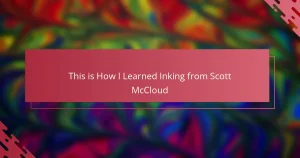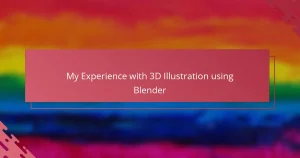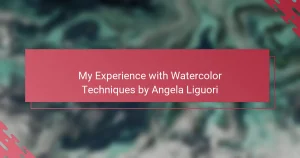Key takeaways
- Expressive line art captures emotion and movement through varied line weights, adding uniqueness and personality to the artwork.
- Including line art in an illustrator’s portfolio showcases precision and confidence while highlighting an artist’s unique voice and style.
- Basic tools like mechanical pencils and fine-tipped pens, along with digital tools, are essential for control and experimentation in line art creation.
- Embracing imperfections and variation in line direction enhances the expressiveness and emotional impact of the artwork.
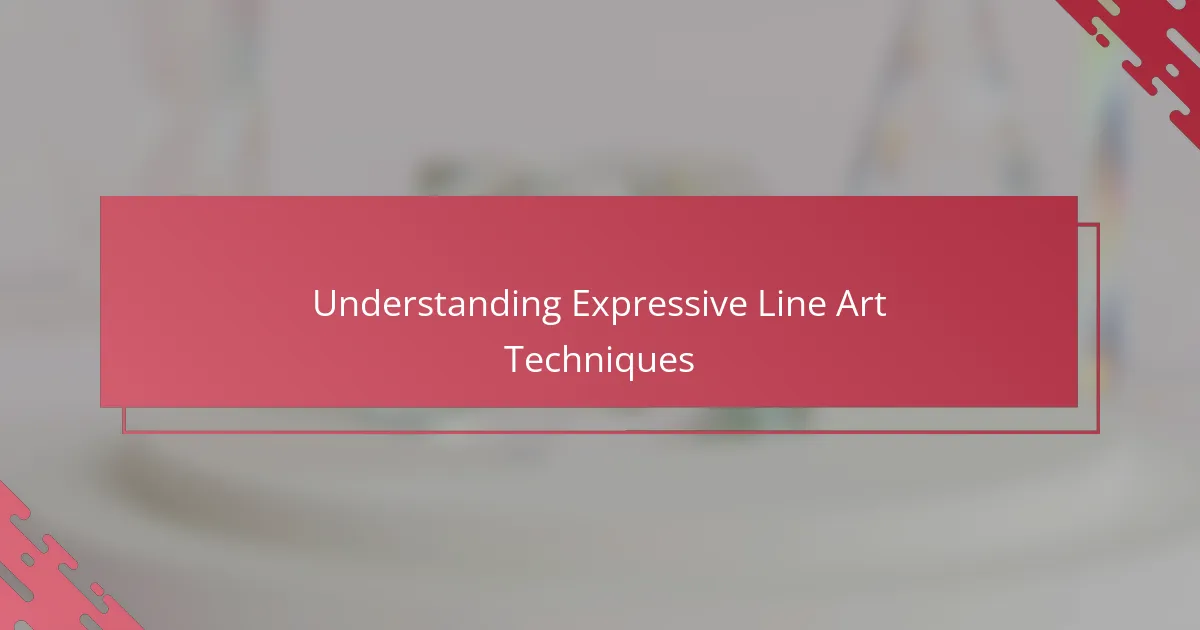
Understanding Expressive Line Art Techniques
When I first explored expressive line art techniques, I realized it’s not just about drawing lines but about capturing emotion and movement. Have you ever noticed how a single, fluid stroke can convey energy or stillness? That’s the magic of using varied line weights and directions to tell a story without words.
What really fascinates me is how imperfections in the line—like a shaky or uneven stroke—can add rawness and personality to the art. It’s as if the artist’s voice echoes through those lines, making each piece uniquely human. Sometimes, letting go of precision feels more liberating than striving for perfection.
Understanding these techniques means seeing lines as more than boundaries or outlines; they become expressions of mood and character. How do you feel when a line swoops boldly across the page or gently fades away? That emotional response is exactly what expressive line art aims to evoke, and I find it endlessly inspiring to experiment with.
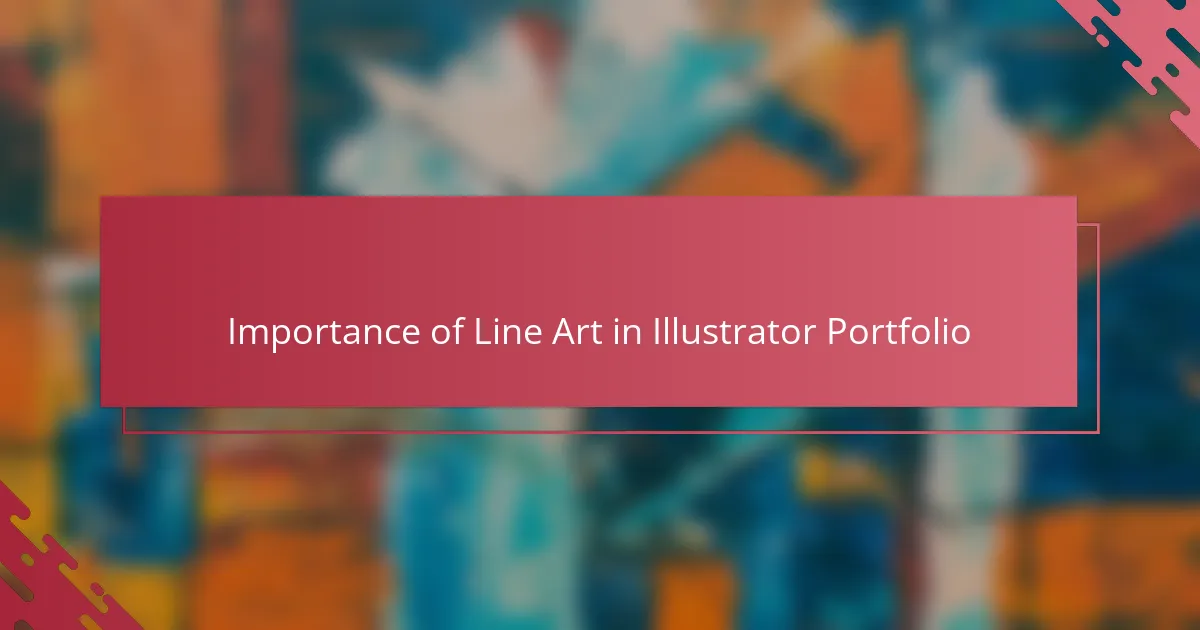
Importance of Line Art in Illustrator Portfolio
Line art plays a crucial role in an illustrator’s portfolio because it reveals the artist’s fundamental skills—precision, control, and expression all come through in the simplest marks. When I look at portfolios, the quality of line work often tells me more about an illustrator’s style and confidence than fully rendered pieces do. Have you ever noticed how a compelling line can immediately draw you in before anything else in an artwork?
I remember feeling both challenged and excited when I first realized that every line I drew was a direct reflection of my thought process and emotion. It’s fascinating how clean, deliberate strokes can communicate clarity, while looser, more textured lines express spontaneity and personality. Including line art in a portfolio not only showcases technical ability but also the artist’s unique voice—something I believe clients and collaborators genuinely want to see.
Good line art also establishes a strong visual foundation for more complex works, making the portfolio more cohesive and versatile. Don’t you think it’s impressive when an illustrator can communicate so much with just black and white lines? That economy of means always strikes me as a true mark of mastery in illustration.
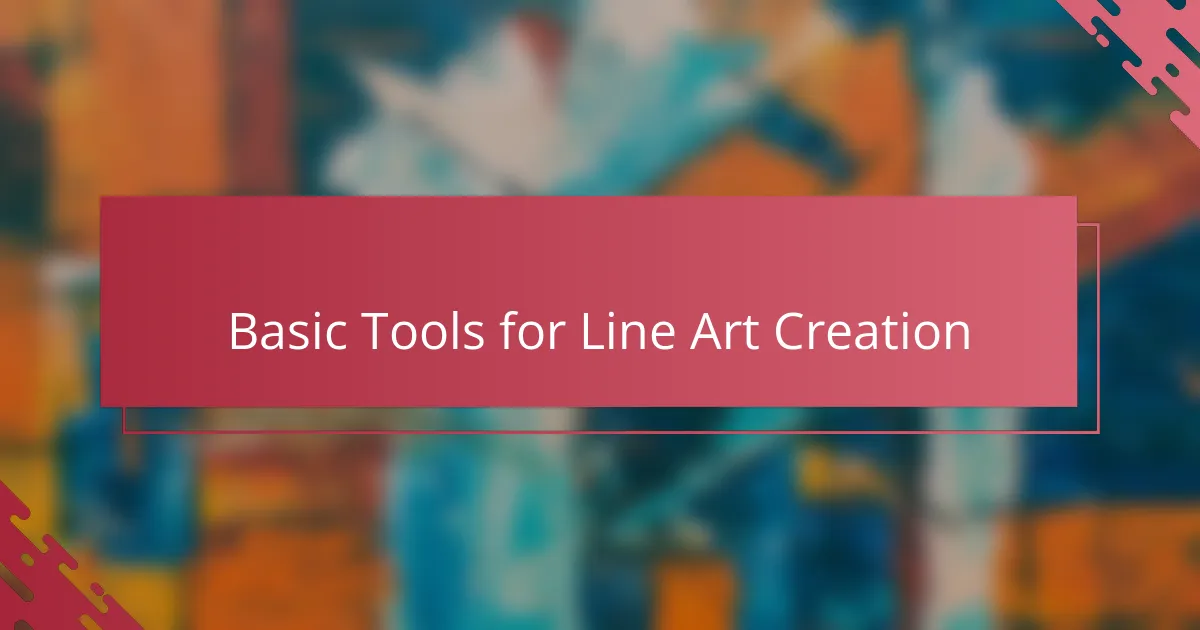
Basic Tools for Line Art Creation
When I started working with line art, the basic tools I reached for were surprisingly simple—just a trusty mechanical pencil and a fine-tipped pen. These essentials gave me the control I needed to experiment with different line weights and textures. Have you ever noticed how switching from a stiff pen to a flexible brush pen changes the whole mood of your strokes?
One tool I can’t live without is the sketchbook with smooth, bleed-resistant paper—it makes every line clean and sharp, which is crucial when you want your expressive lines to stand out. I found that investing in quality tools early on saved me from frustrations like smudging and uneven ink flow, which can kill the energy of a piece instantly.
Digital tools also play a big role in my process nowadays. Using a tablet with pressure sensitivity lets me mimic natural hand movements while giving me the freedom to undo or adjust lines effortlessly. It’s like having the best of both worlds—classic line quality with modern flexibility. Have you tried blending traditional and digital tools to see what expressive lines you can create?
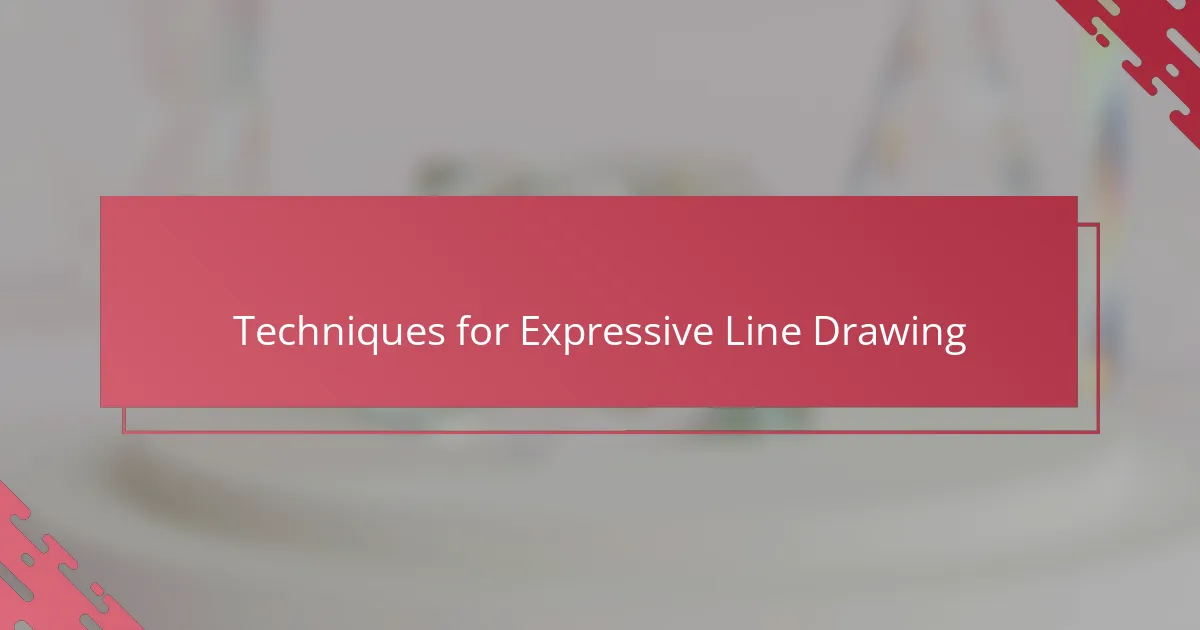
Techniques for Expressive Line Drawing
What I find most effective in expressive line drawing is playing with line weight—thick, bold strokes can shout strength while delicate, thin lines whisper subtlety. Experimenting with this contrast often feels like a dance, where each line’s pressure and rhythm shape the artwork’s mood.
Sometimes, I deliberately let my hand loosen up and embrace irregular, sketchy lines instead of polished ones. Have you noticed how those imperfect, raw marks inject energy and spontaneity? It’s refreshing to think of lines as alive and breathing, rather than rigid boundaries.
Another technique I love involves varying line direction and flow to suggest movement or tension. By shifting angles or layering overlapping strokes, I can guide the viewer’s eye through the piece almost like choreography. This dynamic approach makes the lines feel truly expressive, as if they’re telling their own story beyond the subject itself.
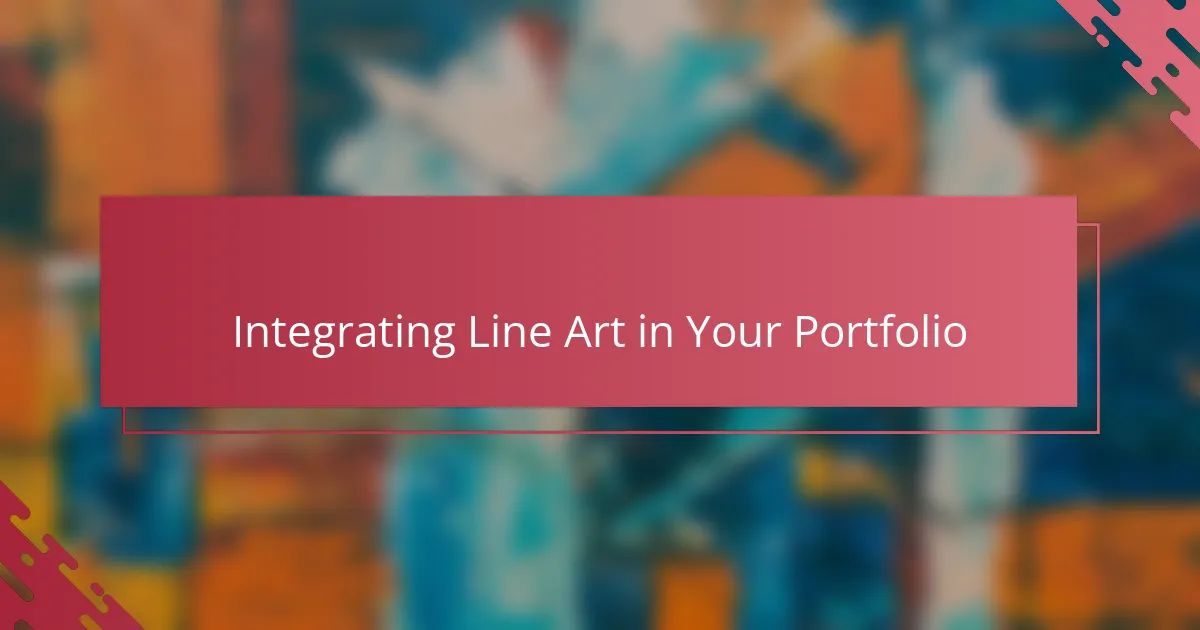
Integrating Line Art in Your Portfolio
Integrating line art into your portfolio has been a game-changer for me because it highlights the essence of my style without distractions. Have you ever noticed how a well-placed line can instantly anchor a composition? Including these pieces lets you showcase confidence in your strokes and invites viewers to connect with your artistic voice on a more intimate level.
When I added more line art to my own portfolio, I saw how it brought balance and variety among fully colored works. It’s like giving your audience a visual breath—clean, elegant, and often more striking than layered details. This contrast can actually make your portfolio more memorable and versatile, reflecting both your technical skill and creative personality.
I also found that curating line art alongside other styles lets me tell a fuller story about my range as an illustrator. What’s interesting is how these minimalist pieces often get people asking questions or sparking conversations about my process. Have you ever had a simple sketch grab someone’s attention more than a polished painting? That’s the unique power of line art in a portfolio.
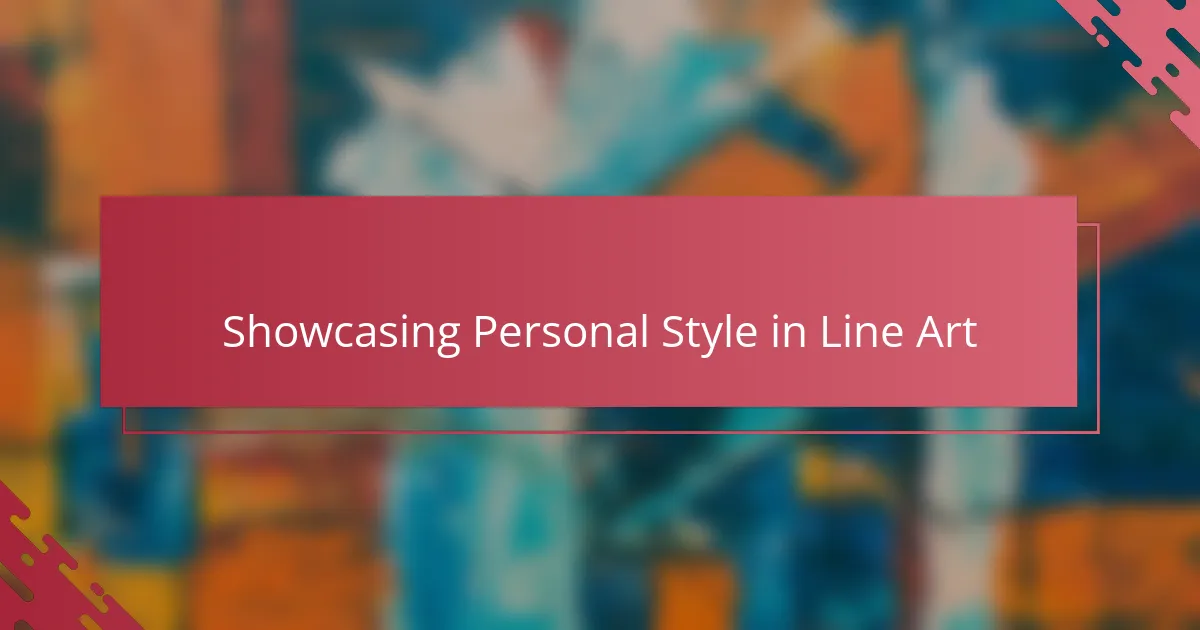
Showcasing Personal Style in Line Art
What truly defines personal style in line art, I’ve found, is how your unique hand rhythm and gesture translate onto the page. Have you ever noticed how certain artists’ lines carry a signature flow or energy that feels unmistakably theirs? It’s less about perfect technique and more about letting your personality infuse every stroke.
For me, showcasing personal style means embracing imperfections that others might shy away from. There was a time when I hesitated to show my sketchy, uneven lines, thinking they lacked professionalism—until I realized those very quirks made my work memorable. Don’t you think those small “flaws” often give art its soul and authenticity?
I also like to think about how line variation—whether through pressure, speed, or direction—allows my inner mood to surface visually. Sometimes a brisk, confident dash conveys excitement, while a slow, hesitant touch reveals thoughtfulness. Capturing that emotional nuance feels like sharing a piece of myself without saying a word.
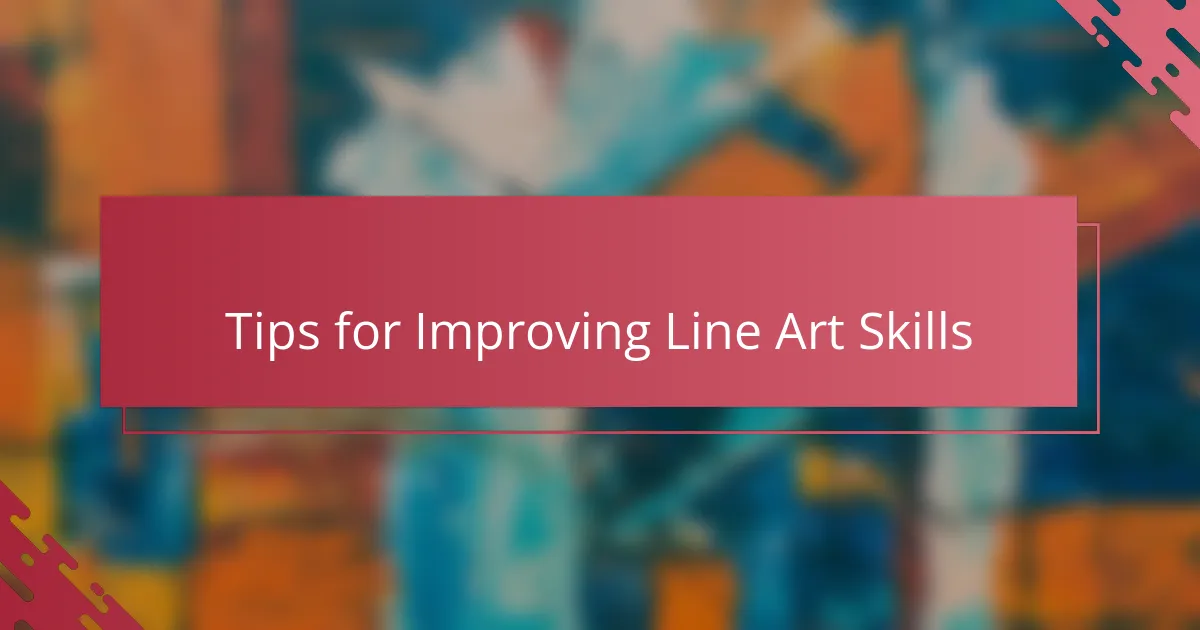
Tips for Improving Line Art Skills
Improving line art skills, I found, starts with practicing deliberate control—repeating simple shapes and strokes until your hand knows exactly how to move. Have you ever noticed how your lines become more confident just by doing quick daily sketches? That small habit made a huge difference in how naturally my lines flow.
I also discovered that experimenting with speed changes everything. Sometimes slowing down helps me achieve clean, purposeful lines, but other times, a quicker stroke captures energy and emotion better. Isn’t it interesting how the rhythm of your hand can completely alter the feeling of a drawing?
Finally, I can’t stress enough the value of stepping back and evaluating your work with fresh eyes. I often put my sketches aside for a day or two, then return to spot where my lines need more variation or looseness. This pause helps me keep my line art from looking stiff and makes the whole piece breathe with life. Have you tried this approach? It might surprise you how much it improves your art.
